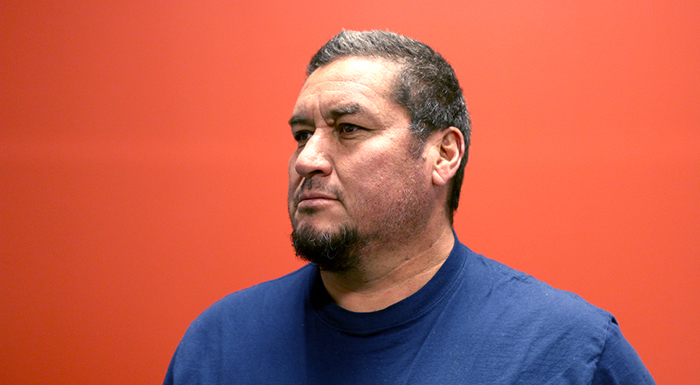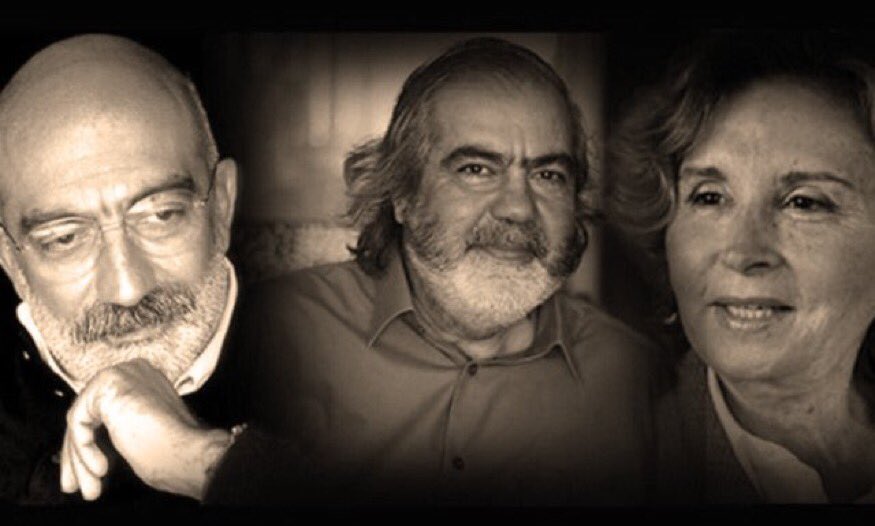الصحافة في المنفى: صحافي مكسيكي يفر الى الولايات المتحدة بعد اختطافه من قبل الكارتل
[vc_row][vc_column][vc_custom_heading text=”ارتكب الرجال من كارتل سينالوا خطأ ، وهم الآن يسعون إلى استخدامه لصالحهم.”][vc_row_inner][vc_column_inner][vc_column_text] [/vc_column_text][/vc_column_inner][/vc_row_inner][/vc_column][/vc_row][vc_row][vc_column][vc_column_text]
[/vc_column_text][/vc_column_inner][/vc_row_inner][/vc_column][/vc_row][vc_row][vc_column][vc_column_text]
كان ذلك في يوليو / تموز ٢٠١٠ ، عندما كان مصور التليفزيون المكسيكي أليخاندرو هيرنانديز باتشيكو وزميله يغطيان أحداث الشغب في سجن في بلدة غوميس بالاسيو بولاية دورانغو في شمال غرب المكسيك. بينما كانوا في طريقهم من السجن ، أوقف مسلحو كارتل سينالوا سيارتهم ، ظانين أن الصحافيين كانا أعضاء في كارتل زيتاس المنافس.
في ذلك الوقت ، كانت عصابة سينالوا ، التي كان يقودها زعيم المخدرات المعروف “خواكين” إل تشابو غوزمان ، تخوض معركة دامية للسيطرة على طرق التهريب في شمال المكسيك. في عام ٢٠١٠ وحده ، قتل أكثر من ١٥،٠٠٠ شخص في حروب المخدرات بالمكسيك. في مدينة توريون القريبة التي يتحدر منها هرنانديز ، حيث كان يعمل في محطة تيليفيزا المحلية، كانت هناك ٩٩٠ حالة قتل هناك في عام ٢٠١١ ، مقارنة بـ ٦٢ في عام ٢٠٠٦ ، وفقًا لوكالة رويترز.
أجبر مسلحو كارتل سينالوا هيرنانديز وزميله على الخروج من سيارتهم ووضعوهم في الصندوق.
يقول هيرنانديز في مقابلة مع “غلوبال جورناليست”: “أخبرونا أنهم سيقتلوننا لأنهم اعتقدوا أننا نعمل مع الكارتل الآخر”. “أخبرناهم أننا نعمل مع تيليفيزا وأريناهم هواتفنا ومعداتنا وميكروفوناتنا وكل شيء. وأدركوا أننا كنا نقول الحقيقة “.
هذا لا يعني أنهم كانوا في أمان. فلعدة أيام بعد ذلك، تم نقل واحتجاز هرنانديز واثنين من الصحفيين المختطفين عبر سلسلة من مخابئ كارتل سالينوا ، حيث تعرضوا للضرب والتهديد بالقتل. وقد أُفرج عن هيكتور غوردوا ، مراسل تيليفيزا ومقره مكسيكو سيتي ، والذي كان يعمل مع هيرنانديز ، بشرط أن يقدم تقريرا يفصّل التعاون بين المسؤولين الحكوميين وخصوم كارتل سينالوا في منظمة زيتاس في حين احتجز هيرناندز وزميله الصحفي خافيير كاناليس كرهائن.
عندما رفضت قناة تيليفيزا بث تقرير غوردوا ، خشي البعض من أن يعدم هيرنانديز وكاناليس. لكنه تم إطلاق سراحهما. فوفقاً لغوردوا ، فقد قرر الكارتل أن قتل الصحفيين قد يضرهم أكثر مما ينفعهم.
أما هيرنانديز ، فقد هرب هو وعائلته إلى الولايات المتحدة ، حيث مُنح حق اللجوء في عام ٢٠١١. وهو يعمل الآن كمصور في كولورادو ، وتحدث إلى أستريج أغوبيان من “غلوبال جورناليست” عبر مترجم عن اختطافه وهربه. أدناه ، النص المحرر للمقابلة:
غلوبال جورناليست: كيف أثرت الكارتلات عليك كصحفي قبل أن يتم اختطافك؟
هيرنانديز: كان الوضع جيد وطبيعي قبل اندلاع الحرب بين كارتيلات المخدرات منذ حوالي عشر سنوات. كانت توريون بلدة صغيرة في منطقة هادئة. لكن في عام ٢٠٠٧ وصل العنف اليها. كان هناك الكثير من مهربي المخدرات، لكن لم تكن هناك مشكلة لأن الناس لم يعبثوا معهم وهم لم يعبثوا مع الناس. ثم وصل كارتل آخر ، الزيتاس ، من شمال شرق البلاد.
ثم بدأت الحرب بينهم وبين عصابة إل تشابو ، أي كارتل سينالوا. بدأت عمليات القتل والاختطاف… وهذا هو الوقت الذي بدأ فيه الخوف ينتشر بين السكان. كانت هناك أعمال قتل كل يوم. وكانت جرائم القتل تجري بالكثير من السادية. لم يكن الأمر مجرد رصاصة في الرأس ، بل تم قطع رؤوس الناس أو قلع أعينهم.
غلوبال جورناليست: كيف فامت وسائل الإعلام التي عملت معها بتغطية هذه الأحداث؟
هيرنانديز: في البداية ، كان كل شيء على ما يرام. كما نقوم بتغطية الاغتيالات ولا ننشر أسماء الفريق الذي عمل على القصة لحمايتهم. بدأنا في التعود على عهد النركوس (مهربي المخدرات) ، والحرب ، وكمية القتل.
بدأت المشاكل في عام ٢٠٠٩ عندما تم اختطاف ثم قتل زميل لنا، اليسيو بارون، الذي كان مراسل شؤون الشرطة في صحيفة في توريون. عرفنا أن المهربين هم من قاموا بذلك ، لكننا لم نكن نعلم أي مجموعة بالتحديد.
كانت هناك أعمال قتل خارج محطات التلفزيون والصحف. استخدموا “مانتاس” ، وهي قطع من النسيج كتب عليها أن ما حدث لاليسيو سيحدث للآخرين أيضًا إذا لم يلزموا الصمت. لذلك بدأ العديد من الصحفيين بالشعور بالخوف.
غلوبال جورناليست: ما هي القضية التي كنت تعمل عليها عندما تم اختطافك؟
هيرنانديز: أتى صحفي من مكسيكو سيتي يعمل في برنامج يسمى”نقطة البداية”. قام مضيف البرنامج بإرسال أشخاص إلى توريون لتغطية قضية مهربي المخدرات هناك. وصل الصحفي [هيكتور غوردوا] ، لكن بدون مصور لأنه غاب عن الرحلة. جاء لطلب المساعدة من محطة تيليفيزا حيث كنت أعمل وطلبوا مني أن أذهب معه.
كان هدفنا إجراء مقابلات مع رؤساء بلديات المدن الثلاث: ليرغو ، غوميز بالاسيو ، دورانجو و توريون. استغرق رئيس بلدية غوميز بالاسيو وقتا طويلا قبل أن يقبل استقبالنا. عندما تركناه ، قيل لنا أن هناك أعمال شغب في سجن سيفيريسو الفيديرالي.
قررنا الذهاب إلى السجن وإجراء المقابلات هناك. كان هناك العديد من أقارب السجناء هناك ، لأنه كانت هناك تقارير عن إطلاق أعيرة نارية في الداخل وكانوا يبكون وكان هناك الكثير من الاجراءات الأمنية. لكن بوجود الجيش والقوى الأمنية شعرنا بالأمان.
عندما غادرنا [هيرناندز وغوردوا] المنطقة ، كانت الساعة الثالثة مساءًا. وعلى بعد ميلين ، عند إشارة مرور ، تم اعتراضنا من قبل سيارة ، وانطلق بعض الأشخاص بالبنادق ودخلوا الى سيارتنا. وضعوني وزميلي في صندوق السيارة.
غلوبال جورناليست: ما الذي حدث بعد ذلك؟
هيرنانديز: قالوا لنا إنهم سيقتلوننا لأنهم ظنوا أننا أعضاء في الكارتل [الزيتاس]. أخبرناهم بأننا نعمل مع تيليفيزا وأريناهم هواتفنا ومعداتنا وميكروفوناتنا وكل شيء. وأدركوا أننا نقول الحقيقة.
كانوا ما زالوا يقولون إنهم سوف يقتلوننا. غطوا أعيننا بقطع من القماش وربطوا أيدينا وأرجلنا. ثم وضعونا في شاحنة وأجروا بعض المكالمات الهاتفية. لا أعرف ما إذا كانوا يتصلون بـ إل تشابو أو شخص آخر.
في يوم الاثنين [٢٦ يوليو ٢٠١٠] عندما أخذونا ، اتصلوا ب تيليفيزا وأخبروهم بأننا في قبضتهم وأنهم سيقتلوننا إذا استمرت الشبكة في نشر الأخبار عنهم. قالوا إنهم يريدون منا أن نقوم بعمل فيديو على اليوتيوب حيث سنقوم باتهام الزيتاس وحكومة كوهويلا.
سجلّنا فيلم فيديو مدته ١٥ دقيقة يوم الثلاثاء وبثته تيليفيزا في ساعة متأخرة من الليل. في هذه المرحلة ، لم يكن أحد يعلم أننا كنا رهائن غير عائلتي وعائلات الرهائن الآخرين، وتيليفيزا.
غلوبال جورناليست: أي أنهم استخدموكم في محاولة لابتزاز تيليفيزا لبث تقارير من شأنها أن تؤذي الكارتل المنافس؟
هيرنانديز: أرادوا يوم الأربعاء أن نسجل تقريرا آخر [يتهم كارتل زيتاس بالتورط مع مسؤولين حكوميين آخرين]. لكن تيليفيسا رفضت قائلة: “لن نكون مسؤولين إذا حدث شيء لهم ، لأننا [الشبكة] لا يمكننا أن نظل رهائن في يد مهرّبي المخدرات.”
كان من المفترض أن الشرطة تبحث عنا. كنا نتوقع منهم أن ينقذونا. لقد احتجزونا في غرفة طولها وعرضها ٤ أمتار. كنا ثلاثة صحفيين وثلاثة رجال شرطة مختطفين وسائق سيارة أجرة. أي كان مجموعنا سبعة أشخاص. كنا في فصل الصيف وكان الجو حارًا جدًا. أعطونا بعض الماء ولكن لا شيء للأكل. إذا كنت تريد النوم أو الجلوس فكان عليك طلب الإذن. لم نتمكن من الذهاب إلى الحمام ، وكان لدينا زجاجة طلاء وهذا كل شيء.
لقد عذبونا نفسياً لأنهم كانوا يقولون إنهم سيقتلوننا. إذا قام [مهربو المخدرات] بقتلك خلال النهار ، فسوف يتركوا جسمانك في الخارج. و بخلاف ذلك ، فإنهم سوف يخفون جثتك.
ما كنت آمله حقاً ، ما كنت أصلي من أجله هو أنه اذا قتلوني ، فإنهم سيتركون جسدي في مكان يمكن للناس أن يجدوني فيه ويتعرّفوا علي ، وأن لا أنتهي كأحد المفقودين. فهذا سيء كثيرا للعائلات ، أسوأ من أن يعلموا أنك ميت.
كنا متعبين جداً لكننا لم نتمكن من النوم ليلاً لأننا كنا خائفين من أنهم سيأخذوننا ويقتلوننا.
غلوبال جورناليست: كيف تم إطلاق سراحكم؟
هيرنانديز: أُطلق سراح الصحفي من مكسيكو سيتي [هيكتور جوردوا] يوم الخميس [٢٩ يوليو ٢٠١٠]. أخذونا [كاناليس وهيرنانديز] إلى منزل آمن آخر. كنا نشعر بالهشاشة مثل الناس في حالة السكر لأننا لم نكن قد أكلنا أو شربنا ما يكفينا لعدة أيام. لم يكن لدينا أي طاقة. وضعونا في غرفة مظلمة مهجورة تشبه الحمامات. كانت الغرفة مظلمة، ولكن أتذكر أنه كانت هناك صراصير وقوارض فيها.
كان الوقت منتصف الليل ، وأردناهم أن يقتلونا لأننا كنا متعبين للغاية من حالة عدم اليقين. لحظة واحدة أرادوا قتلنا ، ثم لم يفعلوا ذلك ، ثم هددوا بذلك مرة أخرى.
بدأنا الصراخ لأنه كان هناك جيران. صرخنا: ” نريد الماء! نريد الماء!”
حاولنا الهرب ، وحاولنا فتح الباب. وصل شخص ما في شاحنة ، وبدأوا في ضربنا. كل الأشياء التي لم يفعلوها في الأيام السابقة ، فعلوها تلك الليلة. ربطونا بالأسلاك من أيدينا وأقدامنا.
بعد نوبة الضرب ، عاملونا بشكل جيد. أعطونا المياه وتم نقلنا إلى منزل آمن آخر ليلة الجمعة. ولكن كان هناك دم في جميع أنحاء الغرفة حيث تم أخذنا. كان هناك فروة رأس. واعتقدنا أن هذا هو المكان الذي يقومون فيه بتعذيب وقتل الناس.
كان هناك شخص يعتني بنا ، حتى أنه أعطانا ماء … غالون من الماء لكل واحد منا. قلت لنفسي: “أريد أن أهرب ، لن أسمح لهم بقتلي”.
لكنني لم أنجح. كنت أشعر بسلام على الرغم من أنني حاولت (الهروب) على الأقل. كانت تلك اللحظة التي استطعت فيها النوم أخيرًا. لا أعرف عدد الساعات التي نمتها.
في ذلك الوقت ، كانت الحكومة وكارتل إل تشابو على الأغلب يتفاوضان [لترتيب إطلاق سراحنا]. بعد ذلك ، أعادونا إلى المكان الآمن الذي كنا فيه في وقت سابق. كانت الشرطة الفيدرالية هناك ويبدو أنهم كانوا هناك ليتظاهروا بأنهم كانوا يقومون بإنقاذنا – لا أعرف ما إذا كان مهربو المخدرات تأخروا في اعادتنا أو ما اذا كانت الشرطة قد جاءت مبكراً. [عندما تم تسليمنا] قالت الشرطة: “ها أنتم! أين كنتم محتجزين؟ كيف حالكم؟”
كان الأمر وكأنه فيلما. لكننا كنا أحرار.
أخذتنا الشرطة لعقد مؤتمر صحفي في مكسيكو سيتي. قالوا إنهم أنقذونا وأنه لم يكن هناك إطلاق للنار ، وأن المهربين لم يفعلوا أي شيء لنا وأنهم أطلقوا سراحنا لأن [الحكومة] طلبت منهم ذلك.
غلوبال جورناليست:ك يف قررت الذهاب إلى الولايات المتحدة؟
هيرنانديز: أفرجوا عني [السبت ٣١ يوليو / تموز ٢٠١٠] وأخذتني الشرطة إلى مكسيكو سيتي. قضيت حوالي ٢٠ يومًا في مكسيكو سيتي مع عائلتي.
ألقت الشرطة القبض على بعض المشتبه بهم. كانوا في الواقع هم من احتجزونا كسجناء. ذهبنا وتعرّفنا عليهم. لكن كما تعلم فإنه لدى مهربي المخدرات فإن الرجال الذين يحملون السلاح هم مجرد جنود. زعيمهم هو من قام بتسليمهم.
خلال تلك الفترة ، قمت بإجراء مكالمات إلى إل باسو ، تكساس حيث لدي أقرباء. وضعوني على اتصال بمحامي عظيم ، أنقذ حياتي. تحدثت مع زوجتي ومحاميي وقررنا عدم العودة إلى توريون. استقلّيت شاحنة ، ثم حافلة ، ثم مشيت.
عبرت الحدود في ٢٢ أغسطس إلى تكساس بتأشيرة سياحية ثم بدأت عملية الحصول على اللجوء السياسي. في٢٣ أغسطس، بدأ كارتل سينالوا يبحث عني. في ٢٤ أغسطس ، عبرت زوجتي مع أطفالنا الصغار. لم نأخذ سوى حقيبة ملابس صغيرة للأطفال ومجلد يحتوي على كافة الأدلة التي تثبت ما حدث لي، والصور والمقالات في الصحف. ثم طلبت اللجوء في هيوستن.
غلوبال جورناليست : ما هي ظروفك الآن؟
هيرنانديز: الآن أنا مقيم في الولايات المتحدة. أحب أن أتمكن من العودة [إلى توريون] لكنني لا أستطيع ذلك. أنا غاضب من الجميع ، الشرطة و مهربي المخدرات ، لأن أبنائي اضطروا إلى مغادرة منزلنا ووطننا.
أعطاني أطفالي الكثير من الشجاعة. كان من الصعب التأقلم مع ثقافة أخرى. أبنائي الآن يذهبون إلى المدرسة ويتحدثون الإنجليزية. عندما وصلت ، عملت في محطة تلفزيون إسبانية محلية في إل باسو حتى عام ٢٠١٥. ثم عُرضت علي وظيفة في كولورادو. الآن أعيش هناك مع عائلتي وأعمل كمصور. أنا ممتن جدا لهذا البلد لأنني وصلت مع حقيبة صغيرة والآن لدينا منزل ، لدي فرصة هنا.
https://www.indexoncensorship.org/2018/02/cartel-kidnapping-mexican-journalist-fled-u-s/
[/vc_column_text][/vc_column][/vc_row]

